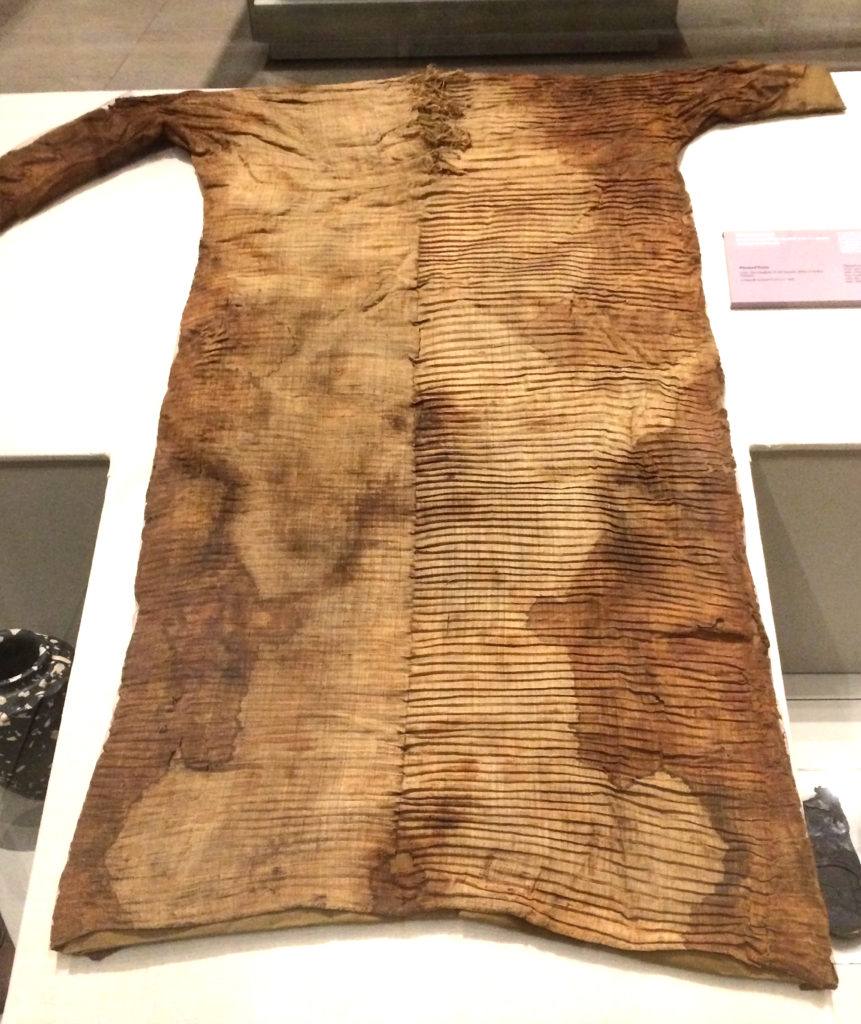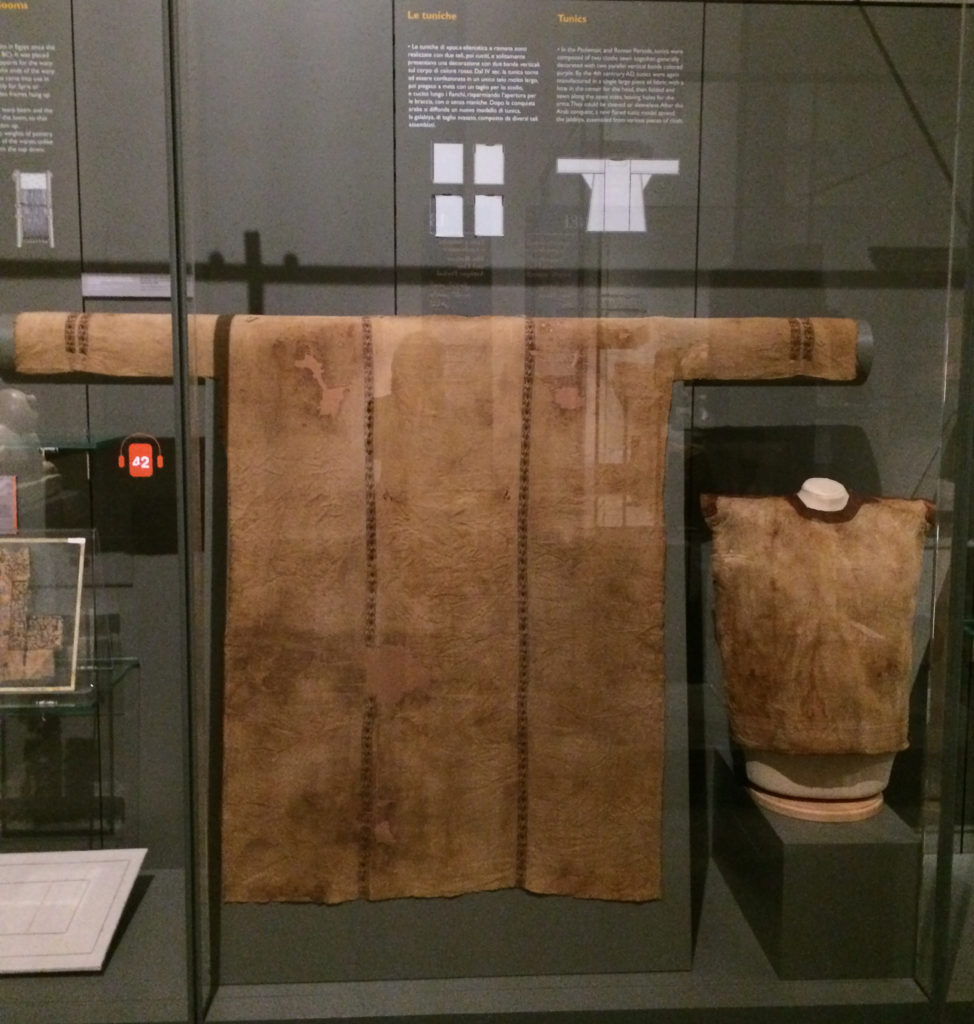More complete, and much more exciting are the pleated linen dresses. The Museo has about a dozen. I had no idea that they existed, never mind that that many survive!

Three are on exhibit – two shown flat and a third shown wrapped around the remains of its former owner. The didactic panels say that it isn’t known how they were made. From the two that are flat, it looks like the fabric was woven on narrow looms and pleated horizontally before being seamed down the middle & sides.
If they were worn by living people, I’m guessing these were luxury garments. Pleats in linen are hard to maintain. Unless the Egyptians had some long-lost linen-pleating technique equivalent to Fortuny’s silk method, they would have had to reset the horizontal pleats every time the dresses were worn to keep them looking sharp, especially if the wearer sat down!

The shape of the pleated gowns looks as if they were made from a series of rectangles, pretty much like the tunic and top on the right.
Oddly, the diagram on the wall behind the tunic and top is different from either – it shows what looks very much like the side-gores-and-underarm-gussets cut that’s still in use in some ethnic costume and historical recreationist garments.
In fact, it was still taught in sewing classes in Europe into the 20th century. The Textile Museum in Toronto has a set of quarter-scale garments that were made as part of a professional seamstress’s graduation exercise in the 1930s, and some of the pieces use the same cut. Shows how long a good and practical design can persist!





